- News
- Reviews
- Bikes
- Accessories
- Accessories - misc
- Computer mounts
- Bags
- Bar ends
- Bike bags & cases
- Bottle cages
- Bottles
- Cameras
- Car racks
- Child seats
- Computers
- Glasses
- GPS units
- Helmets
- Lights - front
- Lights - rear
- Lights - sets
- Locks
- Mirrors
- Mudguards
- Racks
- Pumps & CO2 inflators
- Puncture kits
- Reflectives
- Smart watches
- Stands and racks
- Trailers
- Clothing
- Components
- Bar tape & grips
- Bottom brackets
- Brake & gear cables
- Brake & STI levers
- Brake pads & spares
- Brakes
- Cassettes & freewheels
- Chains
- Chainsets & chainrings
- Derailleurs - front
- Derailleurs - rear
- Forks
- Gear levers & shifters
- Groupsets
- Handlebars & extensions
- Headsets
- Hubs
- Inner tubes
- Pedals
- Quick releases & skewers
- Saddles
- Seatposts
- Stems
- Wheels
- Tyres
- Health, fitness and nutrition
- Tools and workshop
- Miscellaneous
- Cross country mountain bikes
- Tubeless valves
- Buyers Guides
- Features
- Forum
- Recommends
- Podcast
review
£549.00
VERDICT:
Superb wheelset: light, stiff and a wide rim profile letting you enjoy the benefits of wider tyres
Weight:
1,540g
Contact:
At road.cc every product is thoroughly tested for as long as it takes to get a proper insight into how well it works. Our reviewers are experienced cyclists that we trust to be objective. While we strive to ensure that opinions expressed are backed up by facts, reviews are by their nature an informed opinion, not a definitive verdict. We don't intentionally try to break anything (except locks) but we do try to look for weak points in any design. The overall score is not just an average of the other scores: it reflects both a product's function and value – with value determined by how a product compares with items of similar spec, quality, and price.
What the road.cc scores meanGood scores are more common than bad, because fortunately good products are more common than bad.
- Exceptional
- Excellent
- Very Good
- Good
- Quite good
- Average
- Not so good
- Poor
- Bad
- Appalling
Titanium frame and wheel brand Spin's Koppenberg MAX25 wheels combine a wide aluminium clincher rim with durable hubs in a lightweight 1,540g package at a good price.
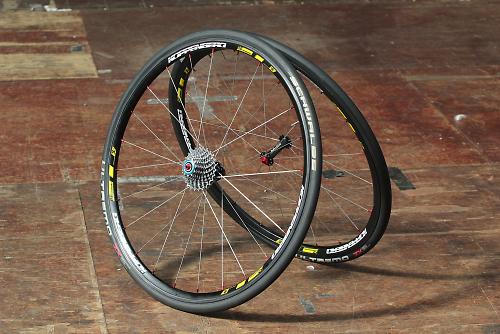
Wide is the new narrow
There are many trends in road cycling at the moment, one of the more interesting is that wider tyres are gradually becoming accepted, even in the pro peloton. However, fit a wide tyre to a conventionally narrow rim and you get a light-bulb profile, which isn't desirable as it can lead to the tyre rolling over when pushed hard through corners, an issue that's worse at the lower pressures that wider tyres allow.
Fit a narrow tyre to a wide rim though, and you get the benefits of the wider tyre with a more stable tyre/rim interface. Spin designed their own 25mm rims for this very reason. We actually measured the external rim width at 24.75mm, but more important is the internal rim width of 19.49mm. That's much wider than many regular road rims.
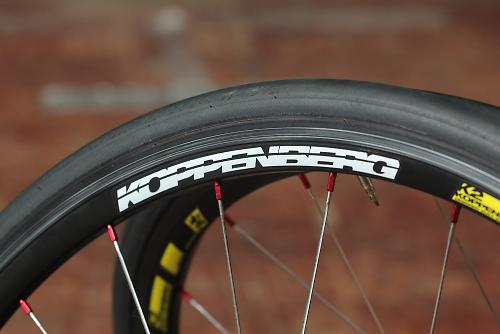
With a 23mm Schwalbe Ultremo tyre mounted to the rim, I measured their width at 25.26mm. Essentially you're getting all the benefits of a wider tyre (increased contact patch and volume so you can run lower pressures) but without the extra weight of actually fitting a wider tyre.
There is also none on the aforementioned light-bulb effect, instead the rim and tyre have a nicely rounded profile. I was able to comfortably run lower pressures, as low as 80psi, and didn't experience any tyre roll or squirm when I pushed hard through corners. And I benefited from the increased comfort as well.

Tough and durable
The rims are laced to Spin's own SPN Precision hubs. These are their latest generation design, forged and machined aluminum shells that are light; 85g for the front and 210g for the rear. They've placed the flanges on the front hub as wide as they can. The HyperDrive 48-point freehub provides quick engagement and takes an 11-speed Shimano or SRAM cassette. There is a Campagnolo option too.

Sapim CX Ray and Laser spokes lace the rims to the hubs. There 20 of them in the front wheel with a radial lacing pattern, and 24 in the back wheel, laced 2-cross. They're well strung wheels, with good tension that remained that way throughout the test period.
They take a pounding these wheels. You just can't beat a good set of well built aluminum clinchers for all-round riding in a range of conditions. I ran them every day while I had them for test, in different bikes, from a steel frame/fork winter bike to a full carbon SuperSix Evo. They provided exceptional performance in both.
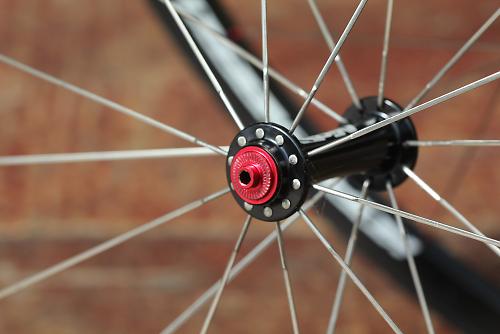
They have a really nice feel these wheels. There's noticeable stiffness when you push them hard, yet there's a hint of compliance that provides good comfort on longer rides, over a variety of road surfaces. They're good on the gravel too, where the stability and larger tyre volume works well.
They're also tough, something I found out when I hit a National Escort Group motorbike in a road race back in the summer. Despite clouting the bike, and the ground, pretty hard, the wheels were still perfectly true, not a bent spoke or rim to speak of. Spin offer a five year crash replacement policy which offers a nice bit of peace of mind.
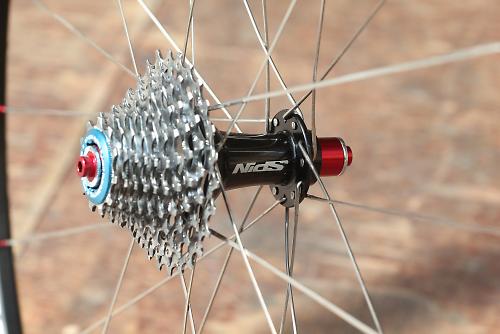
So plenty of performance, comfort and that attractive wide rim, and they're competitively priced too. A comparison would be good here to offer some perspective. The Spin wheels are cheaper than the list price for Shimano's RS81 C35 wheels. The Spin wheels are significantly lighter, and they have the added advantage of the wider rim. Shimano use a 20.8mm external width on the RS81 rims.
All of which makes the Spin Koppenberg MAX25 wheels a really rather attractive package. The width puts them ahead of most of the competition (though some are slowly starting to catch up), they provide a smooth ride, top handling and they're light. Oh and they're really strong too.
Verdict
Superb wheelset: light, stiff and a wide rim profile letting you enjoy the benefits of wider tyres
road.cc test report
Make and model: Spin Koppenberg MAX25 25mm Wide Fat Boy Clinchers
Size tested: n/a
Tell us what the product is for, and who it's aimed at. What do the manufacturers say about it? How does that compare to your own feelings about it?
Get these K2 Koppenberg Fat Boys slotted in your bike and you'll experience super fast rolling with increased corner grip, incredible lateral stiffness and stable handling in all conditions thanks to the 25mm superwide section, 25mm deep 3D2 metal matrix rim profiles.
The matching superlight forged & machined alloy hubset from SPN Precision features HyperDrive 48-point fail-safe engagement and is 11-speed ready. And Sapim CX-Ray aero bladed spokes complete the build to compete very favourably against similar spec Zipp 30s, 101s and HED Ardennes wheelsets.
Tell us some more about the technical aspects of the product?
WEIGHTS (AVERAGE, GRAMS):
Front 690 / Rear 835 / Pair 1525
RIM WIDTH, DEPTH (MM) & FINISH:
25 wide x 25 deep / 3D Black MetalMat
SPOKES FRONT - 20 RADIAL:
Sapim Race CX Ray
SPOKES REAR - 24 TWO-CROSS:
Sapim Race CX Ray Drive / Sapim Laser NonDrive
11 SPEED DRIVETRAIN:
Shimano/SRAM standard, Campag Optional
WHAT'S IN THE BOX:
Rim tape, Quick Release skewers
Rate the product for quality of construction:
8/10
Rate the product for performance:
9/10
Rate the product for durability:
9/10
Rate the product for weight, if applicable:
9/10
Rate the product for comfort, if applicable:
8/10
Rate the product for value:
8/10
Really good weight for the money, and the wide rim is really appealing.
Tell us how the product performed overall when used for its designed purpose
Fattens up a narrow tyre a treat.
Tell us what you particularly liked about the product
Wide profile rim.
Tell us what you particularly disliked about the product
They're not tubeless compatible.
Did you enjoy using the product? Yes.
Would you consider buying the product? Yes.
Would you recommend the product to a friend? Yes.
Anything further to say about the product in conclusion?
With such a good weight-to-price ratio, that all-important wide rim and solid and dependable reliability, it's hard to justify spending more. These are really good wheels.
About the tester
Age: 31 Height: 180 Weight: 67
I usually ride: My best bike is:
I've been riding for: 10-20 years I ride: Every day I would class myself as: Expert
I regularly do the following types of riding: road racing, time trialling, cyclo cross, commuting, touring, mtb,
David worked on the road.cc tech team from 2012-2020. Previously he was editor of Bikemagic.com and before that staff writer at RCUK. He's a seasoned cyclist of all disciplines, from road to mountain biking, touring to cyclo-cross, he only wishes he had time to ride them all. He's mildly competitive, though he'll never admit it, and is a frequent road racer but is too lazy to do really well. He currently resides in the Cotswolds, and you can now find him over on his own YouTube channel David Arthur - Just Ride Bikes.
Latest Comments
- Mat B 29 min 19 sec ago
It is nonsense. I live in NL now. I bike and drive here. Some are large, some are not. Some are bad, some good. Generally though, if you can't see,...
- mdavidford 35 min 17 sec ago
Most of those people aren't cycling as sport, though, which is the relevant outcome for BC's purposes....
- Jamie Williams 58 min 37 sec ago
Not sure how that snuck in! Now changed :)
- chrisonabike 1 hour 49 sec ago
Is this being brought to you by Mr. C? IIRC he recommended dropping an "e" every now and then?
- mark1a 30 min 53 sec ago
If somebody is in the financial situation where they have to choose whether to buy a bike or food to eat, then they don't need to go to a bike shop...
- eburtthebike 1 hour 36 min ago
If I lived there, I'd be asking how it is possible for youtube videos to be viewed on police equipment. That is almost as negligent as what the...
- SpeedingSloth 1 hour 54 min ago
Can Death by Dangerous Driving be upgraded to just 'Manslaughter' as well please? Oh wait, Tory speaking against the car-lobby... never ever gonna...
- Secret_squirrel 2 hours 20 min ago
Interesting review - especially around the dials. ...
- Gravel1-2 2 hours 47 min ago
Idea feels so close but so far. A bunch of electric components (lights, pump, even straight charging) that can use the same battery seems like a...
- Hirsute 3 hours 36 min ago
Will be debated on 31 March https://petition.parliament.uk/petitions/707189









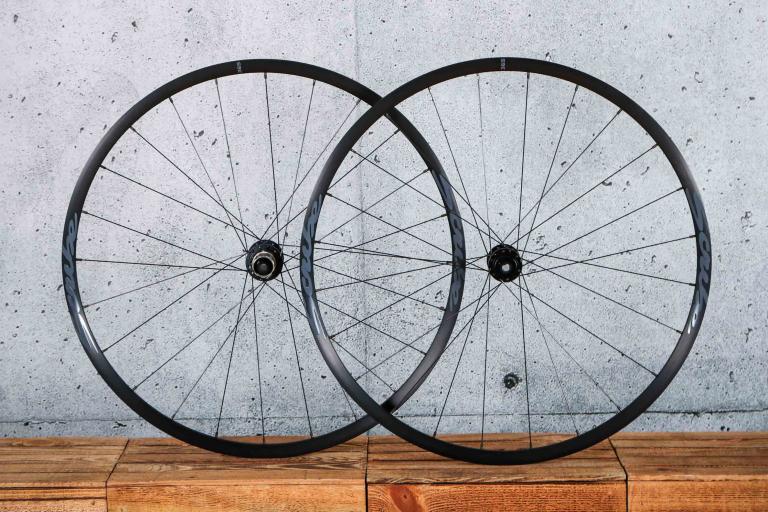
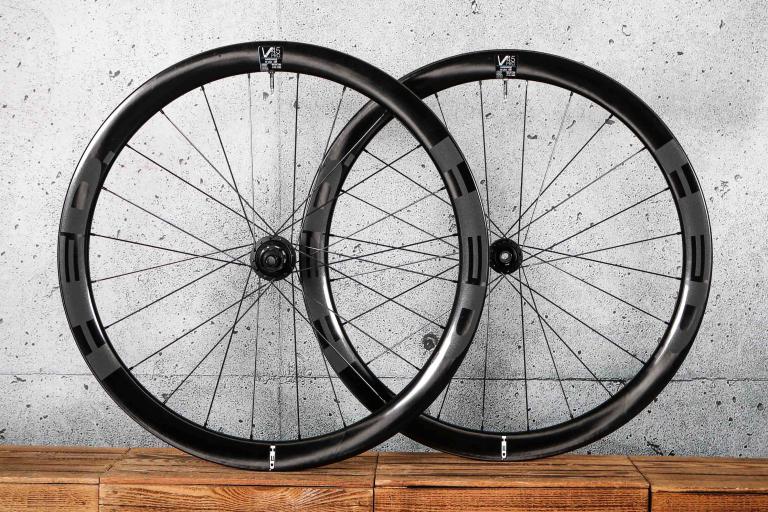
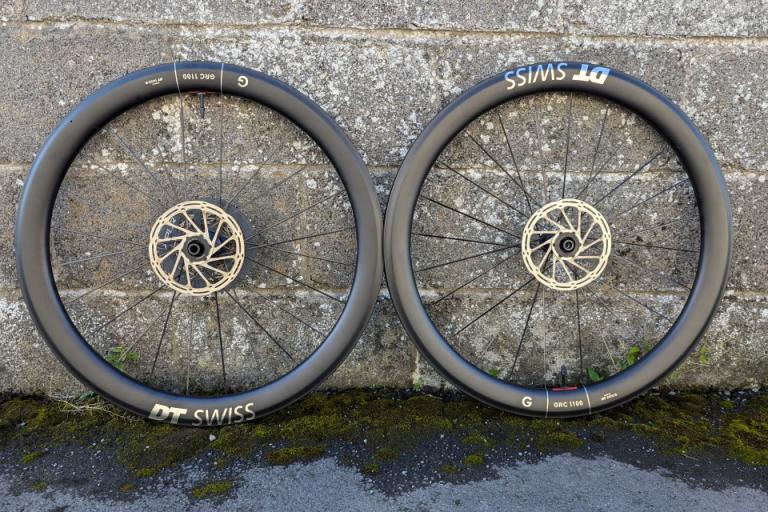
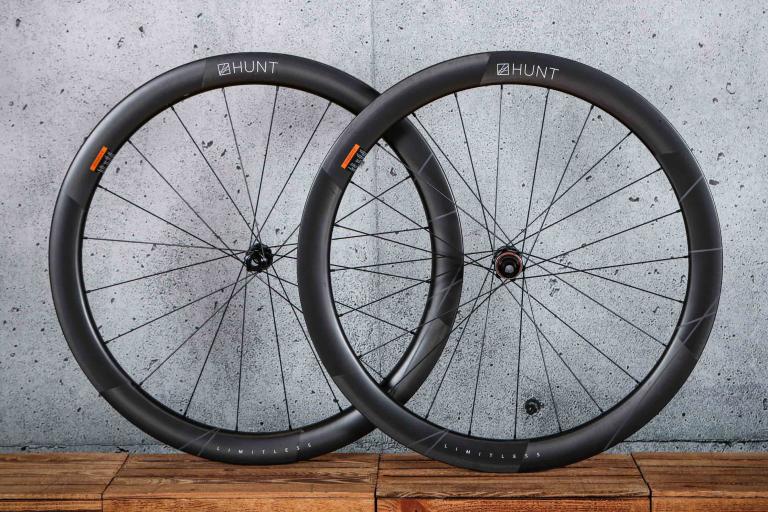
Add new comment
21 comments
Funny how nobody, absolutely nobody, complained about the 'light-bulb effect' until the manufacturers started trying to flog wider rims to us in the last 18 months.
But doesn't that also have something to do with wider tyres becoming all the rage? When the whole world and his wife was running narrow tyres on narrow rims all was well. Then his wife started complaining her butt ached, and the whole world went out and lock-stock changed to wider tyres. Hence the light bulbs. And those nice manufacturers ride in to save the day, and Mrs World's bottom, with wider rims.
wide rim also allow cyclist to run with low rolling resistance and if the rims are u shape designed,they are better in handling crosswind and air drag.
Heaven forfend; we will be back to 27x1 1/4" before long. That's progress for you - twenty years of fashion then back to physics...
This is correct, and in fact the increase in volume is further enhanced by the more circular cross section including the rim. For any given length, the maximum area enclosed by that length will be when it's a circle, the more it gets stretched into ellipse (or light bulb shape) the more the area is reduced until you've stretched your loop into two parallel lines which enclose zero area.
The wider rim allows a more circular overall cross section of the loop made by the tyre and rim, and so allows a greater volume even for the same length.
Many (very many) years ago, Dunlop developed a motorcycle tyre that lapped the Isle of Man TT course in excess of 100 mph. They called it the TT100. It was one of the most successful tyres of the era and continued in development. Guess what the profile was... triangular.
The wide rim with relatively narrow tyre contact area combination that Spin and others are offering give the same advantage: wide at the rim with a (virtually) straight tyre body to the point of contact (as when riding in a straight line) upright position. This gave (and gives) a less deformable profile when canted over for a bend - it works! Tyres that are wider than the rim have the fabled light bulb profile that squirms when canted - it has no countering force on the unsupported opposing side of the tyre so your weight and the centripetal effect bends the side walls leaving the contact patch outside the centre line of the tyre . A triangle is very stable - so the wide base, narrow apex works in stability terms.
The TT100 did suffer in terms of wear in the upright position but then again the torque applied from a 200+ bhp motorcycle will wear a tyre quickly - even Jens can't shred a tyre in a way that makes it unusable in several hundred miles, maybe even thousands...
I think wide rims are worth investigating - the reasoning make sense.
Physics pedant alert
"Essentially you're getting all the benefits of a wider tyre (increased contact patch and volume so you can run lower pressures) but without the extra weight of actually fitting a wider tyre."
Contact patch isn't increased at a given pressure, just the shape of that contact patch changes (shorter and wider to give less rolling resistance and better cornering grip). You also don't get increased volume - the tyre's physical dimensions don't change, just the shape, so the volume is identical at a given pressure, whatever the rim width used. You also shouldn't run them at much lower pressures - they'll deflect more and you'll be more likely to get snakebites. To run lower pressures, you need larger volume tyres.
This was what I couldn't get my head around. I went from 23 to 28, ran half the pressure, and have noticed a marked decrease in flats and a marked increase in comfort. I think the weight penalty was a whopping 30g for a GP4Seasons.
I just don't get how simply going to a wider rim could have delivered the same benefits. Or that an extra 60g for a wheelset shod with 28c's should even be worth while talking about. My mid-ride whizz weighs more than that.
But you are getting a larger volume tyre.
volume and cross section are closely related.
The tyre from bead to bead is a constant for a given tyre, however the rim by getting wider increases the total circumference of the tyre/rim combination and by increasing the circumference you have also increased the cross sectional area and thus the volume.
granted the increase isn't much, but is going from a 23 to a 25 really that much either.
"granted the increase isn't much, but is going from a 23 to a 25 really that much either"
Somewhere around 18%, which seems pretty significant:
http://janheine.wordpress.com/2013/05/23/tire-width-how-much-difference-...
How? Surely it'll be the same volume in a different shape? The tyre isn't actually getting any bigger.
No the tyre is no bigger, however the volume enclosed by the rim and the tyre is bigger, you have to consider the whole package
For arguments sake a 23mm tyre is 50mm from one bead to the other when laid flat.
Take a narrow rim which is 15mm from bead to bead, add the two and you get the total circumference, 65mm, take a rim that is 20mm from bead to bead and now the circumference is 70mm, bigger circumference means more volume.
Had a look at those Flo wheels, seem a bit heavy.
I love the price, the width & the weight. I hate the graphics & colour combo!
Wasn't there a previous review of spin wheels that scored, like, 1.5 stars or something (although it's not linked in the 'related reviews' list)? I would have thought that contrast was worth mentioning.
This review from 2012 Spin Speed Metal 30
apparently they had a batch of incorrectly spec'd bearings and all should be well now.
Aha, thanks! I don't ever seeing the promised follow-up review though.
Is there really no downside to fitting a 23mm vs 28? Surely a 28 would offer even more cushioning / even larger contact patch?
Or is there a diminishing returns point for going with a wider bead seat?
Only downside to bigger tyres is the increase weight IMO
Yes - the 'light bulb' effect mentioned above - you create a poor contact with the side of the wheel/brake track which makes a surprisingly big difference to aero performance. FLO have done a lot of research in this area and even different 23mm tyres can perform dramatically differently on the same wheel, to the extent that you can almost negate any benefit of deep section wheels vs. shallow ones!
I've mentioned FLO on here before - My FLO 30s are around £350 taking into account import duties and so on and have a 27mm wide profile and perform brilliantly in all conditions - can't recommend them highly enough!
I like how the hub logo says 'NidS' if you fit it backwards.